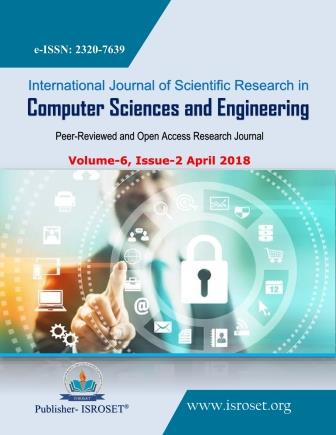Methods for Web-Spam Detection on web: Principles and Algorithms
Keywords:
Web, Internet, Server, Spam, Detection TechniqueAbstract
A excess of big data applications are emerging which is being researched in the field of information technology which needs recognition of pattern and online classification of large dataset fetched from various forum working on online platform. The present research focuses on systematically analyzing and categorizing models that detect review spam. However, spamming is considered as critical issue in web mining. To handle the difficult queries, research is conducted on algorithm for data mining and knowledge discovery. I started with the introduction of web mining, web spam and process of mining Next, the study proceeds to assess them in terms of accuracy and results. Different detection techniques have different strengths and weaknesses and thus favor different detection contexts. The simulation output of our approach on different queries which shows effectiveness of our proposed framework. As the final part, we provide our conclusion and prospect.
References
Abe, T., Miyake, J., Kawashima, M., & Takahashi, K. (2005).“Spam filtering withcryptographic ad-hoc email addresses”, In IEEE SAINT-W02005, pp. 114–117.
Agrawal, B., Kumar, N., &Molle, M. (2005). “Controlling spam emails at the routers”. In Proceedings of the IEEE International Conference on Communications, ICC 2005,Vol. 3, pp. 1588–1592.
Aharon, M., Elad, M. &Bruckstein, A., (2006),“K-SVD: an algorithm for designing overcomplete dictionaries for sparse representation”, Signal Process IEEE Trans 54(11):4311–4322.
Ahonen, T., Hadid, A., Pietikainen, M., (2006),“Face description with local binary patterns: application to face recognition”,PatternAnalMachIntell IEEE Trans 28(12):2037–2041.
Algur, S., &Pendari N. (2012), “Hybrid spamicity score approach to web spam detection” in Pattern Recognition, Informatics and Medical Engineering (PRIME), 2012 International Conference on. IEEE, pp. 36–40.
Amleshwaram, A., Reddy, N., Yadav, S., Gu, G., & Yang, C. (2013.),“Cats:Characterizing automation of twitter spamme”, Technical report, Department of Electrical and Computer Engineering Texas A&M University, College Station, TX 77843.
Androutsopoulos, I., Koutsias J., Chandrinos K. V., and Spyropoulos C. D. (2000).‘‘AnEvaluation of Naive Bayesian Anti-Spam Filtering.’’In Proceedings of the Workshopon Machine Learning in the New Information Age, 11th European Conferenceon Machine Learning, edited by G. Potamias, V. Moustakis, and M. vanSomeren, 9–17. Barcelona, Spain: ECML.
Algur, S., &Pendari N. (2012), “Hybrid spamicity score approach to web spam detection”, in Pattern Recognition, Informatics and Medical Engineering (PRIME), 2012 International Conference on. IEEE, pp. 36–40.
Downloads
Published
How to Cite
Issue
Section
License

This work is licensed under a Creative Commons Attribution 4.0 International License.
Authors contributing to this journal agree to publish their articles under the Creative Commons Attribution 4.0 International License, allowing third parties to share their work (copy, distribute, transmit) and to adapt it, under the condition that the authors are given credit and that in the event of reuse or distribution, the terms of this license are made clear.







